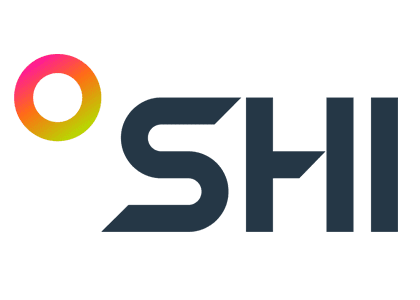Here’s what deep domain expertise can mean for your AI innovation:
Know your stuff, so your LLM can too.

No one can stop talking about generative AI and its promise to revolutionize everything from your morning coffee routine to nuclear fusion. At this point, you may be rolling your eyes when it’s mentioned. But you should listen when it talks back—especially if it’s speaking your industry’s language.
Why? Because within large language models lies a cold, hard truth: Without deep domain expertise, this path to innovation might be a dead end. We’re not talking about investing in teams of AI engineers. Rather, leaders should prioritize the needs of their specific business as they develop AI initiatives—across their people and their processes.
Let’s break it down.
Use cases, not pipe dreams
When we talk about AI use cases, it pays to focus on business initiatives that actually push you forward. They come in three categories:
- Productivity boosters: Think summarization, ideation, and content generation. Common? Maybe. Effective? Absolutely, especially in a vertical, role-agnostic capacity.
- Business function integrations: This is where AI gets cozy with your proprietary data in specific departments, even integrating into critical tools and workflows to enhance high-value/high-traffic processes. Data governance here is crucial, to say the least.
- Industry-specific applications: The holy grail, where you can implement extensive customization by leveraging unique data assets. These will likely require more complex AI techniques – like fine-tuning or training custom models – due to the specificity of knowledge and sensitivity of data.
None of these efforts can fully manifest without good data. In the perpetual quest for efficiency, organizations like yours are likely scrambling for it. Acquisitions, partnerships, self-collection—it’s become a cross-industry frenzy. However, without a laser-focused strategy and domain expertise, you’re just hoarding digital junk. After all, what’s the point of having more of something if you don’t know what to do with it?
The four pieces of AI preparedness
Zero in on efficiency by ensuring your organization has a grasp on the following:
- Skills: Blend AI/ML wizardry with industry know-how for your employees and coworkers. It’s not either-or; it’s both-and. Employees must effectively apply AI to enhance productivity in their roles, while technical leaders should apply common AI technologies to their most critical business areas.
- Cost: Know your industry’s wallet inside and out. AI isn’t cheap, and if you don’t understand your sector’s cost drivers, you’re likely wasting money. That said, it can be considerably less expensive when you focus on the right areas.
- Innovation: If it doesn’t boost your bottom line or sector-specific KPIs, it’s just expensive playtime. Focus on measurable business results, not vanity metrics.
- Governance: Because “oops” isn’t an acceptable excuse when you’re playing with AI fire. Tailor your governance to sector-specific risks and regulations.
It pays to dive deep into your sector’s quirks, constraints, and opportunities.
That means prioritizing high-impact business outcomes and adapting technical foundations to align with your use case requirements.
Here’s a reason to start right now: By 2025, 40% of professional services will be riding the generative AI wave. If you’re not prepping for this surge, you’ll get swept away.
Treating industry knowledge as optional in AI implementation shouldn’t be an option. Because it’s not just about having the best AI; it’s about having the best AI that actually understands the world you live in.
The importance of tailored implementation
You don’t have to look far ahead to see the exciting potential for customized AI applications. It’s already on the verge of revolutionizing whole industries through:
- Predictive maintenance in manufacturing – Foresees equipment failures, reducing downtime and saving costs.
- Personalized medicine in healthcare – Analyzes patient data and genetic information, avoiding bias, and crafting personalized treatment plans for individuals.
- Education – Optimizes administrative process for teachers and students and creates a blended learning model where instructors and AI work in tandem to deliver the best educational outcomes.
- Smart energy management – Improves energy consumption in real-time across cities, potentially revolutionizing sustainability efforts.
- Financial fraud prevention – Studies transaction patterns in real-time, detecting and preventing fraudulent activity before it impacts the customer.
- Real-time language translation – Breaks down language barriers providing real-time translations.
- Efficient legal research – Accelerates the review process by sifting through thousands of documents, identifying relevant precedents and legislation faster than ever before.
- Enhanced creative design – Becomes a partner in creative processes, offering design suggestions in architecture, fashion, and digital media, that push the bounds of human imagination.
Ultimately, your competitive advantage is contingent upon making your AI work smarter and harder, fitted to the specific challenges and opportunities within your industry. But here’s the kicker: Implementation is everything. Without good guidance, you’re being told to find treasure without a map. With SHI as your artificial intelligence partner though, you’ll not only get your map but a custom one at that. Our multi-phase implementation framework accelerates time-to-value by 50%, guides key decision-making, fosters AI culture, and moves quickly while minimizing risk.
Don’t fall behind. Get tailor-made AI initiatives that speak your industry’s language by reaching out to our experts today.





